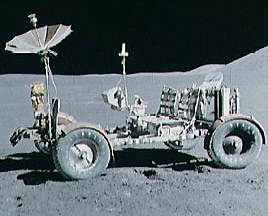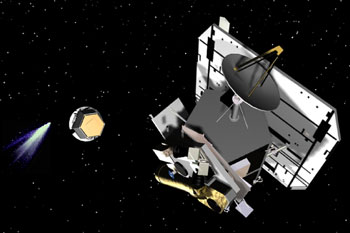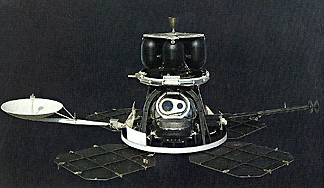AU
AU, which stands for "astronomical unit", is a unit for measuring distance. One AU is the average distance from the Sun's center to the Earth's center. It is equal to 149,597,871 km (92,955,807 miles).
AUs are often more convenient to use than kilometers when measuring large distances such as those in space. In this case kilometers are just too small - it would be like measuring the distance from Boston to San Francisco in inches. AUs simply make a measurement easier to understand and give you something to compare it to.
For example, Saturn's orbit around the Sun has an average radius of 9.5 AU, which means that Saturn is about ten times farther from the Sun than Earth is. The average distance from the Sun to distant Pluto is about 40 AU. Mercury, the planet closest to the Sun, orbits at an average distance of 0.39 AU.
AUs are generally used for measurements of distances within our Solar System. Distances to stars are much larger, and are expressed in terms of light years. One light year is equal to more than 63,000 AUs. The nearest star, Proxima Centauri, is just over 4 light years away.
You might also be interested in:

The Hubble Space Telescope (HST) was one of the most important exploration tools of the past two decades, and will continue to serve as a great resource well into the new millennium. The HST found numerous
...more
Driven by a recent surge in space research, the Apollo program hoped to add to the accomplishments of the Lunar Orbiter and Surveyor missions of the late 1960's. Apollo 11 was the name of the first mission
...more
Apollo 12 was launched on Nov. 14, 1969, surviving a lightning strike which temporarily shut down many systems, and arrived at the Moon three days later. Astronauts Charles Conrad and Alan Bean descended
...more
Apollo 15 marked the start of a new series of missions from the Apollo space program, each capable of exploring more lunar terrain than ever before. Launched on July 26, 1971, Apollo 15 reached the Moon
...more
NASA chose Deep Impact to be part of a special series called the Discovery Program on July 7, 1999. The Discovery program specializes in low-cost, scientific projects. In May 2001, Deep Impact was given
...more
The Galileo spacecraft was launched on October 19, 1989. Galileo had two parts: an orbiter and a descent probe that parachuted into Jupiter's atmosphere. Galileo's main mission was to explore Jupiter and
...more
During 1966 through 1967, five Lunar Orbiter spacecrafts were launched, with the purpose of mapping the Moon's surface in preparation for the Apollo and Surveyor landings. All five missions were successful.
...more














